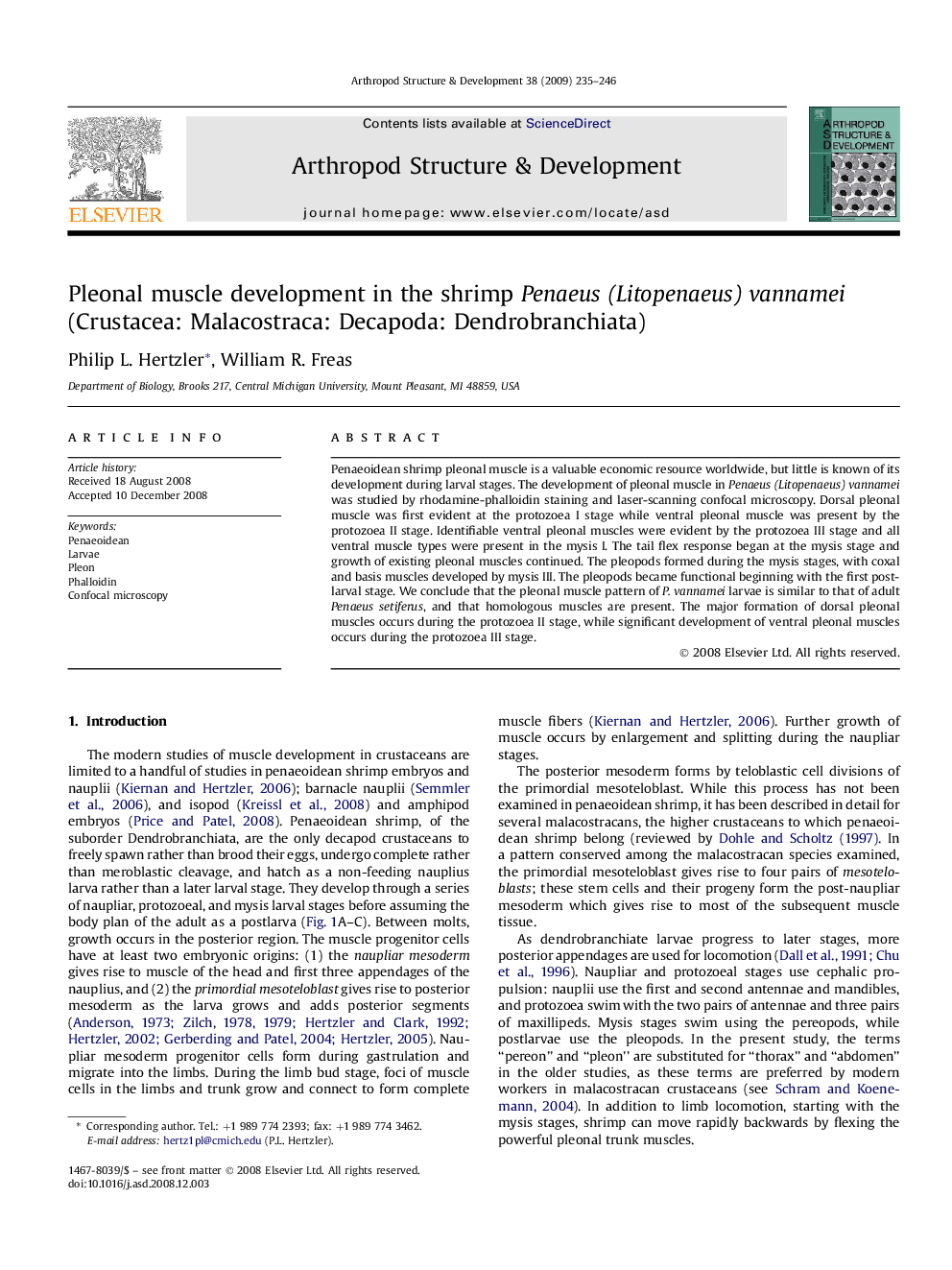| Article ID | Journal | Published Year | Pages | File Type |
|---|---|---|---|---|
| 2778905 | Arthropod Structure & Development | 2009 | 12 Pages |
Penaeoidean shrimp pleonal muscle is a valuable economic resource worldwide, but little is known of its development during larval stages. The development of pleonal muscle in Penaeus (Litopenaeus) vannamei was studied by rhodamine-phalloidin staining and laser-scanning confocal microscopy. Dorsal pleonal muscle was first evident at the protozoea I stage while ventral pleonal muscle was present by the protozoea II stage. Identifiable ventral pleonal muscles were evident by the protozoea III stage and all ventral muscle types were present in the mysis I. The tail flex response began at the mysis stage and growth of existing pleonal muscles continued. The pleopods formed during the mysis stages, with coxal and basis muscles developed by mysis III. The pleopods became functional beginning with the first post-larval stage. We conclude that the pleonal muscle pattern of P. vannamei larvae is similar to that of adult Penaeus setiferus, and that homologous muscles are present. The major formation of dorsal pleonal muscles occurs during the protozoea II stage, while significant development of ventral pleonal muscles occurs during the protozoea III stage.
